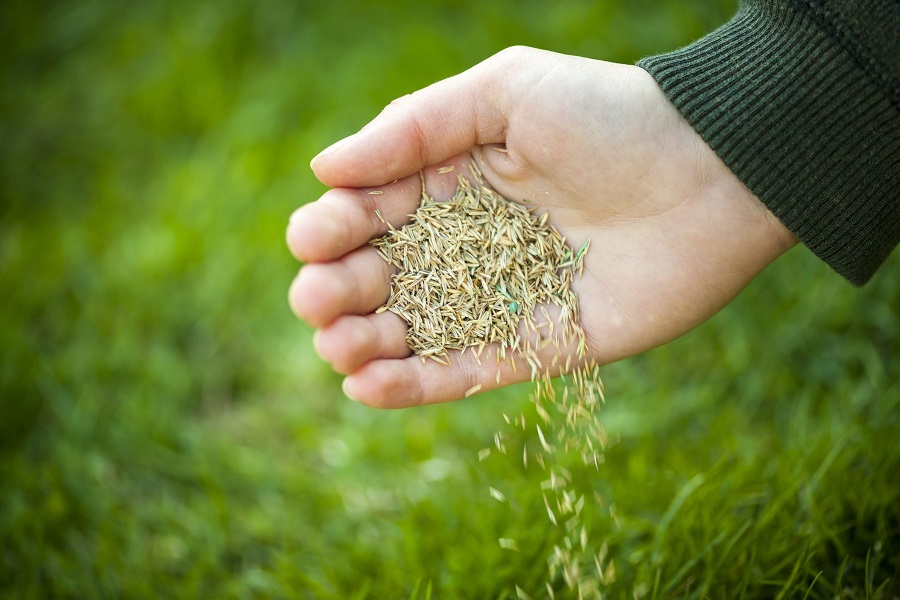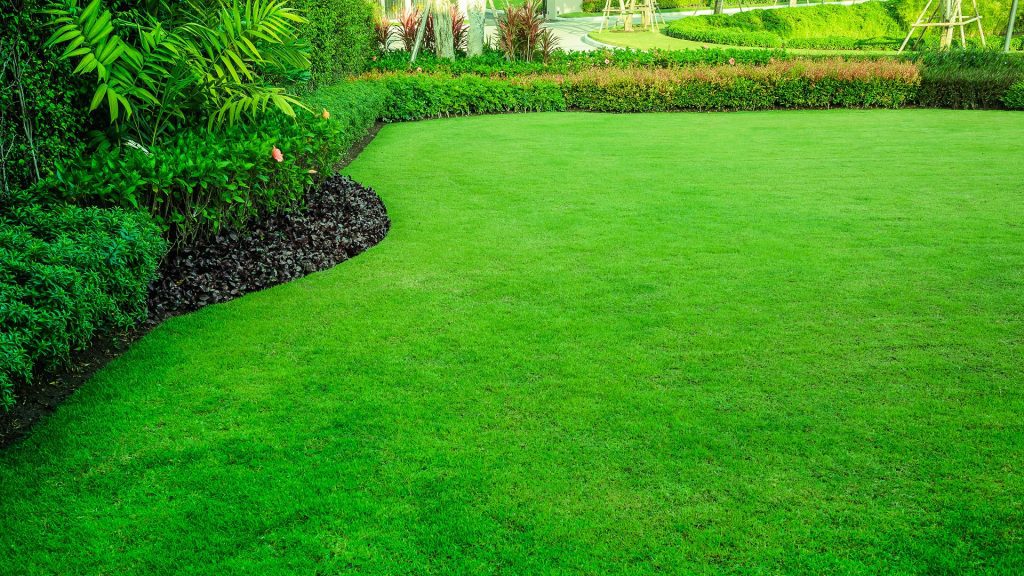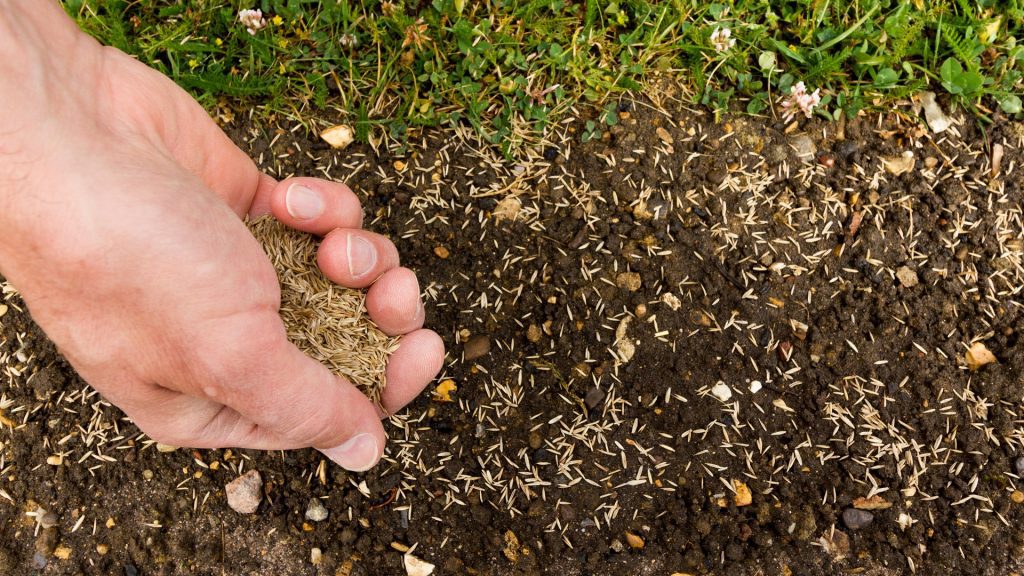
How Much Grass Seed Do I Need For My Lawn?
When you want to plant grass in your garden, you’ll need to know how much grass seed you should buy. This will vary depending on many factors, such as the size of the area in which you want to plant grass and if you’re planting the grass from seed.
How much grass seed do you need to make a lawn? If you want to grow a lawn from seed, you’ll have to sow between 25 and 30 grams of grass seed per square meter.
If you’re overseeding to makeover an existing lawn, around 20 grams per meter squared is sufficient. With this in mind, here’s how to work out the amount of grass seed you’ll need.
How To Calculate How Much Grass Seed You Need

You need to ensure that you have an accurate amount of grass seed. If you have too little or too much grass seed, these are both problematic.
Too little grass seed will give you a thin lawn in which weeds can grow. By comparison, a very thick lawn is more susceptible to disease.
There are different ways in which to calculate the quantity of grass seed you’ll need for your lawn. Here are some to consider, depending on the shape of your lawn.
If you have a rectangular or square lawn
This is the easiest calculation to do – simply multiply the width of your lawn by its length. So, if your lawn is five meters wide and 10 meters long, you will multiply 5 by 10 to get 50.
Then, multiply the number you get by 0.03 kilograms (0.06 pounds) to find out how much grass seed you require. If you’re overseeding your lawn, you’ll have to multiply it by 0.025 kilos (0.05 pounds).
If you have a round lawn
You need to take the diameter (measurement across the circle of lawn) of your lawn and divide it by 2 to get the radius (R). Then, multiply the radius by itself, before multiplying it by 3.14.
Then, multiply the number you get by 0.03 kilograms (0.06 pounds) to find out how much grass seed you require. If you’re overseeding your lawn, you’ll have to multiply it by 0.025 kilos (0.05 pounds).
If you have an oddly-shaped lawn
You will need a sheet of graph paper for this calculation. Make one large square on the paper the equivalent of a square meter. Then, measure the length and width of the garden, drawing it on graph paper.
If you have permanent features in your lawn, such as fences, draw them to scale and measure the distance between the edges of the lawn from those features. Mark them on the paper.
Draw the complete outline of your lawn and count its full squares. Note the number. Count any partial squares and guess how many full squares they would add up to, before adding the numbers together. This calculation will give you an accurate square meterage of your lawn.
How Much Grass Seed Do I Need? Other Things To Consider

- Seed Density: You need to know how densely you should sow your grass seed. Conveniently, this will most likely be listed on the seed pack as the weight of the seed per square meter of lawn. If you’re planting a new lawn, you’ll require 25 to 30 grams of seed per square meter. However, this might vary a bit according to your lawn mix. If you’re filling in bald patches of lawn, you’ll need the same density as you would for new lawns. If, on the other hand, you’re overseeding your lawn, you’ll require fewer seeds. You’ll use around 15 to 25 grams per square meter.
- Grass Type: To further make this a bit complicated, you will need to consider the type of grass you’re going to plant as you’ll either require less or more of the seed depending on the grass type. For example, if you have Kentucky bluegrass, you’ll need two or three pounds for every 1,000 square feet of lawn. By comparison, you’ll require four to five pounds per 1,000 square feet of perennial ryegrass or fine fescue grass seed.
When To Increase Or Decrease The Amount Of Grass Seed

There are instances in which you might have to either increase or decrease the amount of grass seed you’re using to grow a beautiful lawn. Here are some to consider.
- You need to make a few small repairs to your lawn: If you need to patch up a few areas of your lawn, you should avoid using too much grass seed as this will grow dense tufts. About 25 grams per square meter is usually enough for you to use in this situation.
- You want to mow your lawn short: While you should never mow your grass too short, you might want to keep it as short as you can according to the type of grass you have. If this is the case, increase the amount of seed so it’s about 20 percent more than the seeding rate listed on the bag. Note that the rate is marked as the amount of seed in grams per square meter that are required, such as “25-30grams per square meter.”)
- You want weed-free soil for your lawn: If your soil already has weeds present, you should add 20 percent to the highest seeding rate that’s listed on the seed bag and use this on your lawn.
- You’re planting the grass in cold, dry conditions: If the conditions in your part of the world are currently cold and dry, you should increase the seeding rate by up to 100 percent. That said, it’s worth bearing in mind that your grass seed won’t germinate if the temperature is lower than eight degrees Celsius.
- Your lawn gets a lot of sun: Since seed that’s growing in a sunny area will require more watering because it needs to remain moist, you should water the grass multiple times per day for a month after planting the seeds. This will increase your chance of success.
Do You Need To Consider The Season In Which You’re Planting Grass Seed?
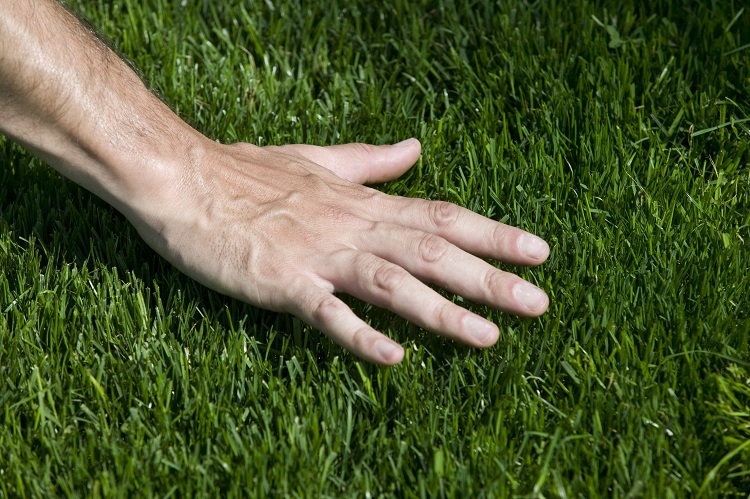
You should always read the label on the bag of grass seed to find out what its planting requirements are, as these can differ. You also need to consider the type of grass you’re planting, such as if it’s cool-season or warm-season grass.
For example, sowing cool-season grass at the start of summer won’t work even if you use a larger amount of seed. This type of grass should be planted when soil temperatures are between 50 and 60 degrees Fahrenheit and daytime air temperatures are between 60 and 75 degrees Fahrenheit.
Warm-season grasses require air temperatures that are warm, preferably between 70 and 90 degrees Fahrenheit. The soil temperature should be between 65 and 70 degrees Fahrenheit.
Tips For Overseeding Your Lawn

In this article we’ve touched on the seed quantity you need if you’re overseeding your lawn. But you might wonder what this means, exactly.
Overseeding is basically when you add grass seed to an existing lawn to boost the grass color and produce thicker grass to make it stronger against disease.
When overseeding your lawn, you’ll have to follow important steps.
- Ensure the seeds you’re going to plant will have good contact with the soil, so remove any thatch and dead grass if these are present.
- Cut your existing grass short – use your lawnmower’s lowest setting. After mowing your grass, remove the grass clippings so they won’t block the contact the grass seeds need to make with the soil.
- Follow the instructions on the seed packet. You can use a seed spreader to make overseeding your lawn easier.
- Water the seeds immediately after you’ve planted them. Water them daily until they germinate. Your first watering session should be a heavier one, and then water the lawn every few days once the grass seeds have germinated.
Related Questions
When is it safe for you to mow your new grass?
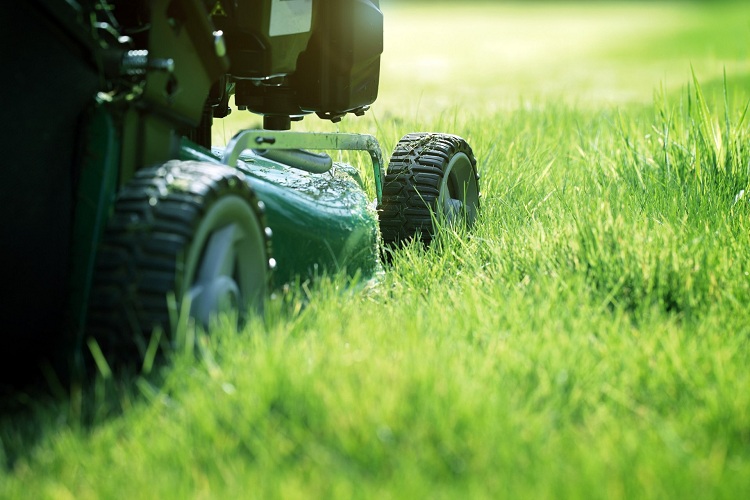
Once your grass has grown to a height of around three inches, you can mow it. Use sharp lawnmower blades so they’ll cut cleanly through the grass. This keeps your grass healthy because it won’t tear the grass, which makes it susceptible to disease.
Do you need to purchase extra grass seeds?
A good tip is to order 20 percent more grass seed than you need as 10 percent will help you if you’ve inaccurately measured how much you need and the other 10 percent can be kept for future lawn repairs.
Conclusion
If you want to sow grass seed, it’s important to use the correct quantity otherwise you can damage your lawn or not get the thick, healthy grass you’re after.
In this guide, we’ve featured some important things to consider before you purchase and sow grass seeds. We’ve also given you some tips on how to overseed your lawn.
Resources:
